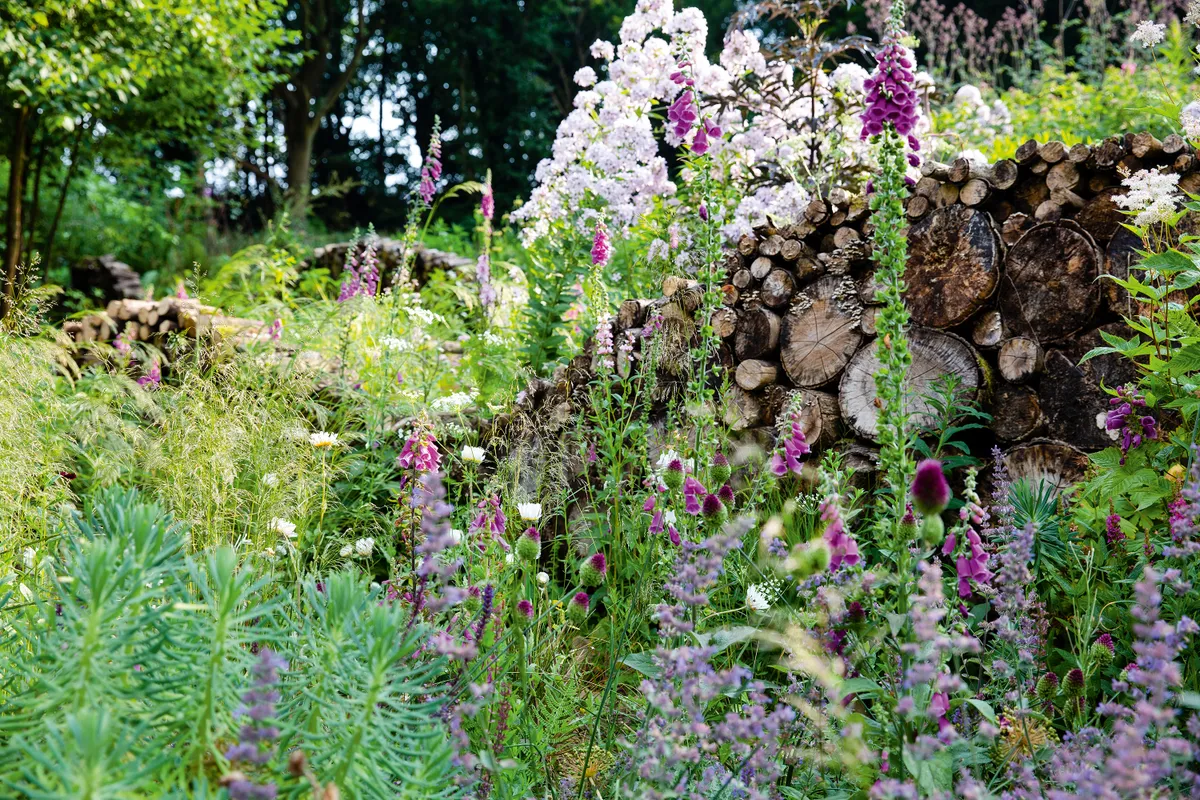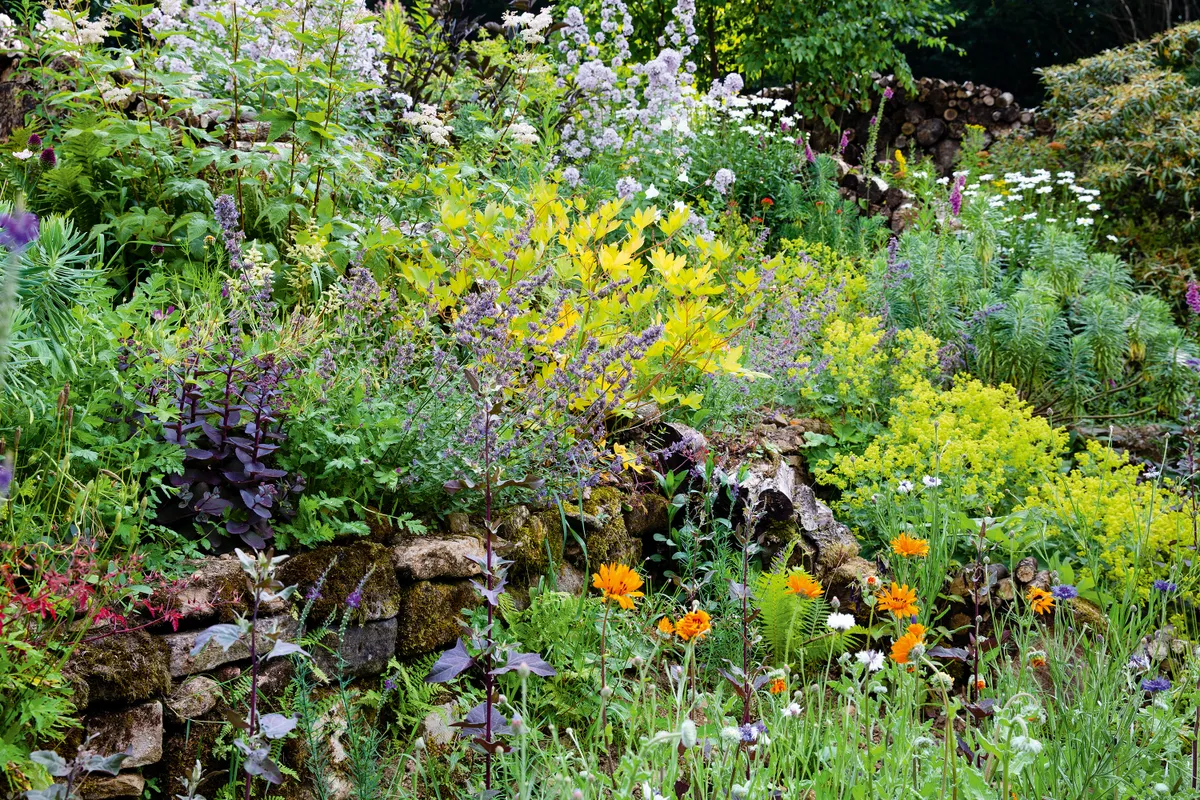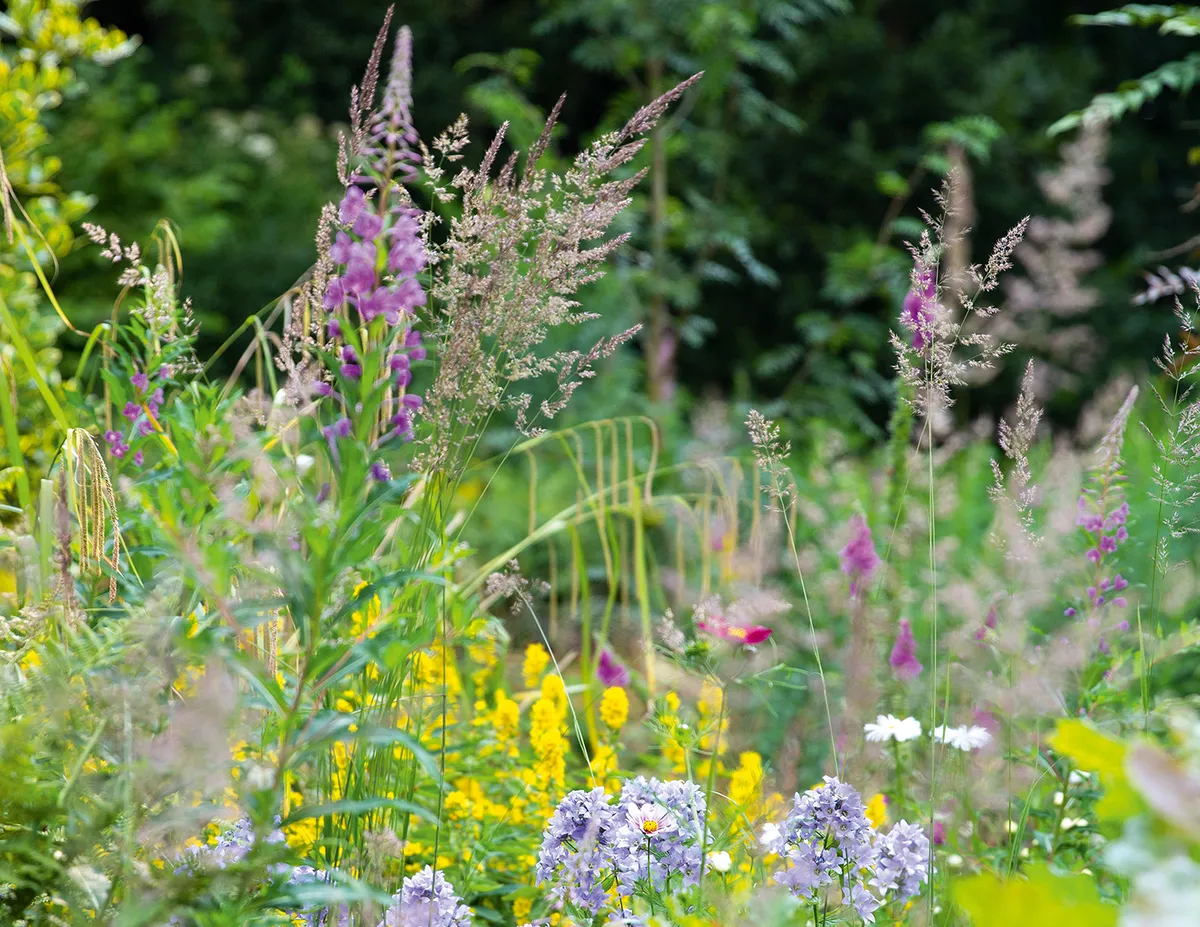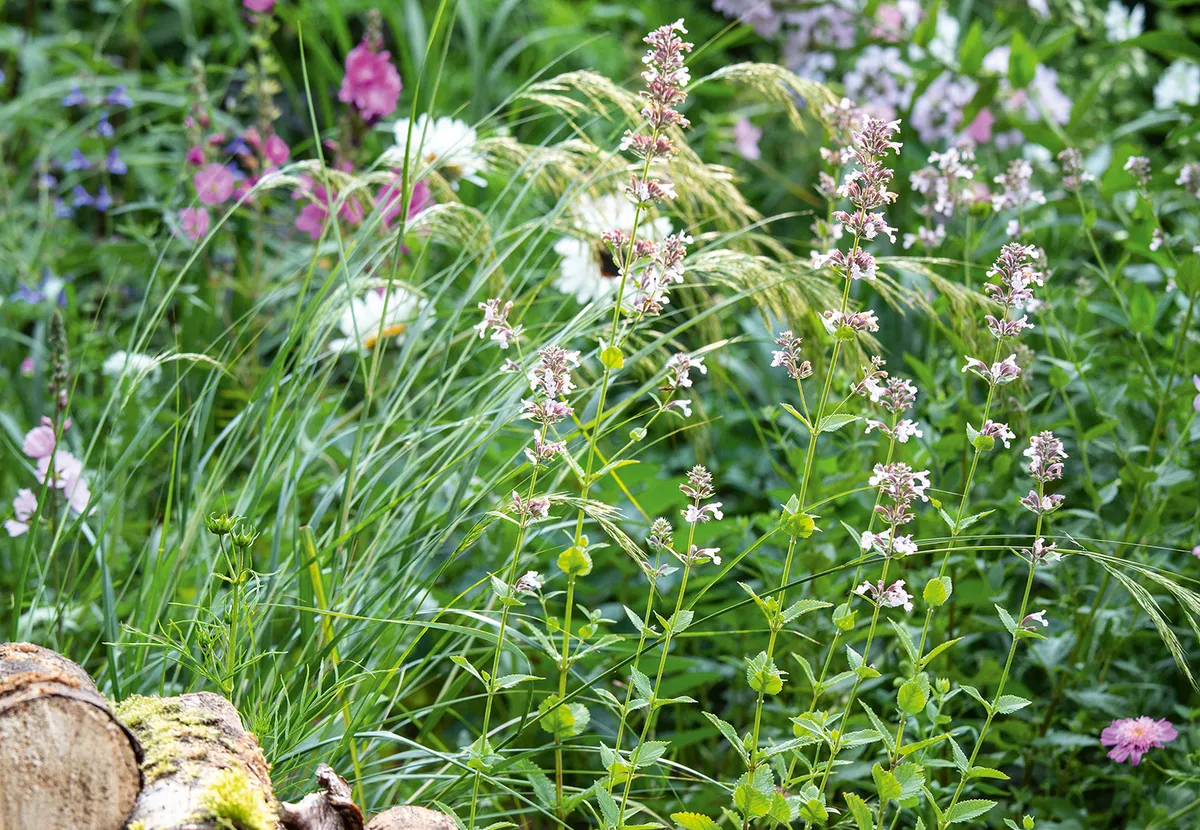The private garden of designer Nigel Dunnett, who was responsible for much of the planting at the Olympic Park, is a former quarry turned woodland garden in the Peak District, which is just over an acre. It has thin and rocky soil, over gritstone bedrock with a cool and wet climate. Hardiness zone: USDA 8b.
You only need to search online for images the public have posted of the Olympic Park to see how infectious and joyous Nigel Dunnett’s work can be. "I think making gardens has the potential to be one of the highest forms of art because there’s a deep emotional level to what it does to us, to our wellbeing," he says. Here's more from his own personal space, a garden built on land that had been abandoned for 150 years.
Using non natives

Nigel has always mixed native and non-native plants in naturalistic combinations, believing the idea of prioritising natives is more of a philosophical debate rather than a scientific necessity in gardens. The key thing is to promote a high diversity of plants, and a layering of the planting to give it structure. “I want to create gardens that are diverse and enrich us and wildlife,” says Nigel. Every year he raises tender annuals, many from South Africa, in a small greenhouse to add to the scheme. “They bring a vitality and freshness throughout the year,” he says. In this sunny spot Scabious columbaria is combined with the South African, Cape daisy, Arctotis fastuosa var. alba ‘Zulu Prince’ .
Rain garden

At the front of the house Nigel has created a rain garden to absorb the runoff from the house roof, which is diverted from the downpipes into the garden. Planting here is slightly more formal than at the back and is in narrower, 60cm-wide beds. “These are fairly narrow beds and I wanted to create a sense of multiple layers, so I’ve chosen plants that are very upright and don’t make a lot of shade, which allows for the next layer to grow up successionally between them.” Among the plants that can cope with wet conditions are Miscanthus x giganteus, which is left standing in winter for structure, Ligularia ‘The Rocket’, Leucanthemum vulgare and Astilbe chinensis var. taquetii ‘Purpurlanze’.
Log piles

Partly inspired by the Peak District’s dry-stone walls, the log piles are made up of stacked sections about 20-30cm long, with larger logs at the base so that the piles build into a curve. “They are an incredible insect habitat,” says Nigel. “Because of that we get birds endlessly in and out collecting moss for nests or feeding and resting.” Many of the plants, such as the Ammi majus, Allium sphaerocephalum and the self-seeding foxglove, Digitalis purpurea, have colonised themselves into gaps. The logs need to be replaced as they rot down after a while, but this means that there’s an incredible fungal fruiting every autumn as toadstools appear, giving the garden a whole new dimension.
Repeating Themes

Several plants have been used throughout the garden to add a rhythm to the planting. In particular the accent plant Euphorbia characias subsp. wulfenii has been scattered across the site to give a pace to the garden, while plants with dark foliage, such as Hylotelephium ‘José Aubergine’ act as anchor plants to pull the design together, and add a counterpoint to the cool blues of Nepeta racemosa. At the centre of this group bleeding heart, Lamprocapnos spectabilis ‘Alba’, is a perfect plant for this style of naturalistic planting, because after its spring flowering, its foliage fades to a beautiful yellow before disappearing so that the next layer can come up. Throughout the garden Nigel has Campanula lactiflora ‘Loddon Anna’ for its almost flouncy lilac blooms, along with Alchemilla mollis, which he uses almost like water, allowing it to tumble like a waterfall down the slope. Its yellow flowers contrast nicely with the colours of the annuals, such as the orange-red Arctotis x hybrida ‘Orange Prince’, the white Arctotis fastuosa var. alba ‘Zulu Prince’ and the blue cornflower Centaurea cyanus.
Accent grasses

For Nigel naturalistic planting is less about trying to recreate planting combinations from the wild and more about combining the forms, colours and textures of plants in ways they might arrange themselves naturally. In his own garden the emphasis is on flowering plants, but he does use a few delicate and graceful grasses. “Grasses are important,” he says, “but I treat them as accent rather than in a scattered way in a matrix.” Here the delicate sedge Carex pendula sits alongside the carmine pink spires of the willow herb, Chamaenerion angustifolium, and the upright feather grass Calamagrostis x acutiflora ‘Karl Foerster’, which comes into its own in winter.
Coppiced garden

The woodland feel to Nigel’s garden is inspired by the Kent countryside of his childhood where he would regularly roam among the ancient hedgerows and local coppiced woodland. “It was a great privilege to grow up in such an environment,” he says. “One I wish every child could have. I remember being about 16 or 17 and understanding that the way I felt about beautiful, flower-rich, natural landscapes was something I never felt about a pristine garden.” That spontaneous feel here is created using Stipa calamagrostis, which floats above the log piles with Nepeta grandiflora ‘Dawn to Dusk’ and delicate, lilac flowers of the Scabiosa columbaria.